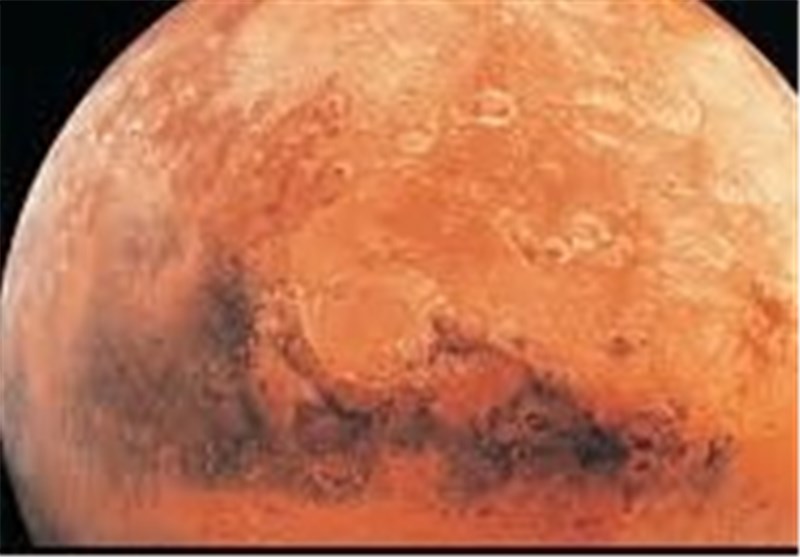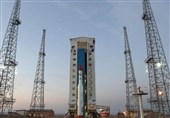A Promising Sign Life Could Have Once Existed on Mars
TEHRAN (Tasnim) – A groundbreaking new discovery on the Red Planet could alter our understanding of this mysterious world, and our search for life on it.
Scientists have just made a big, big discovery on the Martian surface after diving into the reams of data collected by the Mars Curiosity rover deployed by NASA years ago. Researchers determined that there was once an ancient lake on Mars that behaved very much like an Earth lake, with different parts of the lake offering suitable conditions for different types of microbes.
It’s a huge surprise to scientists and a promising sign that life could have once existed on our neighbor. The findings are based on the first three and a half years of data from the Curiosity rover, and they were published in the journal Science with the title, “Redox stratification of an ancient lake in Gale crater, Mars.”
This ancient lake may have existed many eons ago; for example, the lake that was in the Gale Crater probably disappeared about three billion years ago. But the signs that this ancient lake behaved like Earth lakes by having environmental conditions suitable for different types of life is an encouraging signs for scientists hoping for a breakthrough in the search for alien life.
A long-lasting lake on ancient Mars provided stable environmental conditions that differed significantly from one part of the lake to another, according to a comprehensive look at findings from the first three-and-a-half years of NASA’s Curiosity rover mission. While previous work had revealed the presence of a lake more than three billion years ago in Mars’ Gale Crater, this study defines the lake’s chemical conditions and uses Curiosity’s powerful payload to determine that the lake was stratified.
Stratified bodies of water exhibit sharp chemical or physical differences between deep water and shallow water. In Gale’s lake, the shallow water was richer in oxidants than deeper water was.
“We’re learning that in parts of the lake and at certain times, the water carried more oxygen,” said Roger Wiens, a planetary scientist at Los Alamos National Laboratory and co-author of the study, published today in the journal Science.
“This matters because it affects what minerals are deposited in the sediments, and also because oxygen is important for life. But we have to remember that at the time of Gale Lake, life on our planet had not yet adapted to using oxygen–photosynthesis had not yet been invented. Instead, the oxidation state of certain elements like manganese or iron may have been more important for life, if it ever existed on Mars. These oxidation states would be controlled by the dissolved oxygen content of the water.”
“These were very different, co-existing environments in the same lake,” said Joel Hurowitz of Stony Brook University, lead author of the report. “This type of oxidant stratification is a common feature of lakes on Earth, and now we’ve found it on Mars. The diversity of environments in this Martian lake would have provided multiple opportunities for different types of microbes to survive.”
Whether Mars has ever hosted any life is still unknown, but seeking signs of life on any planet, whether Earth, Mars or more-distant icy worlds, begins with reconstruction of the environment to determine if it was capable of supporting life. NASA is using Curiosity to explore habitable environments on the ancient surface of Mars.
Over more than 1,700 sols (martian days, which are 24 hours, 39 minutes long), Curiosity has traveled more than 16 km from the bottom of Gale crater part way up Mount Sharp near the center of the crater. Los Alamos National Laboratory developed the laser-shooting Chemistry and Camera (ChemCam) instrument that sits atop Curiosity in conjunction with the French space agency.
Los Alamos’ work on discovery-driven instruments like ChemCam stems from the Laboratory’s experience building and operating more than 500 spacecraft instruments for national security.
Scientists are using all the data collected by ChemCam and other on-board instruments to put together a more complete picture of the geological history of Mars.
Gale crater on Mars was once a lake fed by rivers and groundwater. Hurowitz et al. analyzed 3.5 years of data from the Curiosity rover’s exploration of Gale crater to determine the chemical conditions in the ancient lake. Close to the surface, there were plenty of oxidizing agents and rocks formed from large, dense grains, whereas the deeper layers had more reducing agents and were formed from finer material. This redox stratification led to very different environments in different layers, which provides evidence for Martian climate change. The results will aid our understanding of where and when Mars was once habitable.
The primary goal of NASA’s Curiosity rover mission is to explore and quantitatively assess a local region on Mars’ surface as a potential habitat for past or present life. A necessary component of that assessment involves an investigation of the surface chemical conditions and paleoclimate of ancient Mars. Gale crater was selected as the landing site for Curiosity; it hosts a ~5-km-tall mountain of layered sedimentary rock. The rocks of Mount Sharp preserve a long-duration record of martian environmental conditions. Geological reconstructions from Curiosity rover data have revealed an ancient, habitable lake environment that was sustained for tens of thousands to tens of millions of years by rivers draining into the crater.
We seek to constrain the chemical environment within the lake in Gale crater, as well as short- and long-term climate variations in and around Gale crater. We focus on fine-grained sedimentary rocks that carry information about sediment provenance, the environment of deposition, the conversion of sediment to rock during burial (i.e., lithification), and the chemical conditions of later modification (i.e., diagenesis). These were investigated during the first 1300 martian solar days (sols) of rover operations in Gale crater using bulk geochemical and mineralogical analysis techniques, combined with high-resolution color imagery at a variety of scales.
The observed variations in CIA are consistent with modest short-term fluctuations in the ancient climate between cold, dry conditions and relatively warmer, wetter conditions. These changes occurred during the deposition of lake-bed mudstones in an environment that was conducive to the presence of a long-lived lake in Gale crater.
It is proposed that the distinct properties of the two Murray facies were developed as a result of (i) fractionation of river-borne detritus into coarser, denser materials in shallow water close to shore and finer, lower density materials offshore in deeper water as a result of deceleration of river flow as it entered the lake; and (ii) redox stratification of the lake water body, caused by depth-dependent variations in the concentration of atmospheric oxidants and dissolved, groundwater-derived solutes, resulting in oxidizing conditions in shallow water and anoxia in deeper water.
The addition of saline minerals during a later phase of brine migration through the section records longer-term changes in martian climate at Gale crater, perhaps driven by global atmospheric escape processes. The recognition of redox stratification in the lake in Gale crater adds new detail to our understanding of ancient martian aquatic environments.
Previously reported detections of organic carbon compounds, nitrogen, phosphate minerals, and Fe and S minerals in a variety of redox states, combined with the evidence presented here for relatively stable climate conditions and gradients in fluid oxidation state, provide compelling evidence that all of the physical, chemical, and energetic conditions necessary to establish a habitable environment were present on Mars between 3.8 billion and 3.1 billion years ago.





